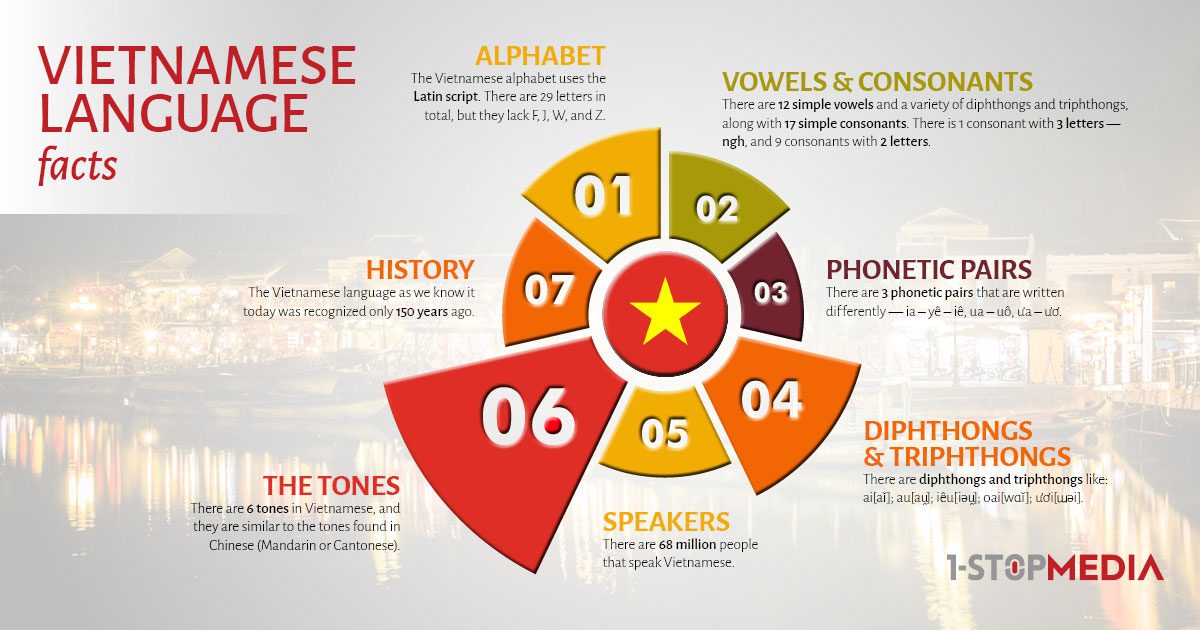Vietnamese Language
Vietnamese is one of the most beautiful languages, filled with poetry. If you are fluent in it, when you start learning another language, it might even feel bland and practical to you, because of its richness. And this is not because the rest of the languages are simple, not at all! It is purely because Vietnamese is a fascinating world in its own way.
The Vietnamese Media Scene
With Vietnam’s booming economy comes the huge interest towards the country itself and alongside this comes the long-term strategy of the movie industry in the country to develop the cultural industry by 2030. Cinema has been on the rise and is searching for cracks in the international media market to go for their own breakthrough similar to South Korea and the movie “Parasite”.
The growing VoD (video on demand) and streaming services make it even easier for such ambitions and currently the market is thriving. Along with that comes the necessity of expert media translators who are well-versed in navigating the complicated machine of the media world and the cultural and linguistic challenges this country poses.
A huge part of the 1-StopMedia efforts has been concentrated on developing the skills needed on that side with the single aim to adapt our media translation services to match the requirements of the market.
Facts that affect Vietnamese to English and other languages translation:

The complexity of Vietnamese translation
1. The written language > Translation Service
- Honoritication: There is an extensive system of honorifics used in the Vietnamese language. Actually, you cannot communicate with someone without explicitly expressing your understanding of the hierarchy between you and your speaker, or perhaps expressing that there is a lack of hierarchy. The system of honorifics in Vietnamese dictates not only how you call the person you’re speaking to, but how you choose to call yourself as well. In other words, not just what form of “you” is used but also what form of “I” is used. The system is based on a wide range of factors, some of these are more mystical than others. For example, your age, your interlocutor’s perceived age, your gender, your interlocutor’s gender, how you know each other, whether you work together, whether you’re related, whether you’re siblings, whether you’re cousins, whom you’re married to, whom your interlocutor is married to, etc.
- Writing system: Vietnamese was originally written with characters based on Chinese characters. At the beginning of the 20th Century, a Latin-based alphabet was declared the official writing system. Since Vietnamese is a tonal language, it extensively uses diacritics to differentiate the different tones. Although many bugs have been fixed, some CAT tools and DTP tools still allow the diacritical marks to be lost or broken. This means that our Vietnamese translators, editors, and proofreaders must be equipped with special utilities and equipment to be able to work with the language.
2. The spoken language > Media Service
- Dialects: Vietnamese has 3 main recognized dialects: Northern, Central, and Southern which are widely accepted/known by everyone. Some scholars may further divide the central dialect into three smaller groups: north-central, mid-central, and south-central. The major differences between these dialects are the vocabulary (including basic vocabulary, non-basic vocabulary, and grammatical words), consonant correspondences, and tone correspondences. The Central regional varieties, which have a significant amount of vocabulary differences. They are generally less mutually intelligible to Northern and Southern speakers. The standard dialect in Vietnam is the northern (Hanoi) dialect because it is spoken in the capital. Additionally, it is used on television, books, official documents, etc. While the southern dialect (Saigon) is commonly used among the overseas Vietnamese, particularly in the US.
- Tone: Vietnamese is a tone language, which simply put means that there is more in complexity than meets the eye at first glance. The meaning of words and sentences is affected by the pitch in which they are spoken. For the Western speaker, this is usually the most challenging aspect of the language. The meaning and connotation of many if not most Vietnamese words and phrases are changed by the six tones used in the inflection and pronunciation.
1-StopMedia’s solution for you
At 1-StopMedia we believe that sharing our experience with our clients and partners is an essential part of delivering the services your company needs. We branched out from 1-StopAsia with the single purpose of concentrating on improving our media translation services and creating a flawless and tailored solution for LSPs and large business companies that require media services for Asian languages.
Drawing from over 20 years of experience, we benefit from the skillful and accurate translators we have and at the same time fit our process to match your workflow and requirements. Our project managers are experienced in working with Asian languages, work as per ISO 17100 and ISO 9001 and at the same time can advise you on the type of services your company needs.
Request a Free Quote
We, at 1-StopMedia, are aware that responsiveness and excellent project management are the essence when working within the translation industry.
If you feel it is time to improve your time-management and pay more attention to your clients, get in contact with our Production Team and check how we can help you achieve it.
Ask us anything you need to know about:
- quotes and pricing
- translations and media services
- Asian languages
Start your new project with us today! All you have to do is fill in the form on the right and get your free quote.